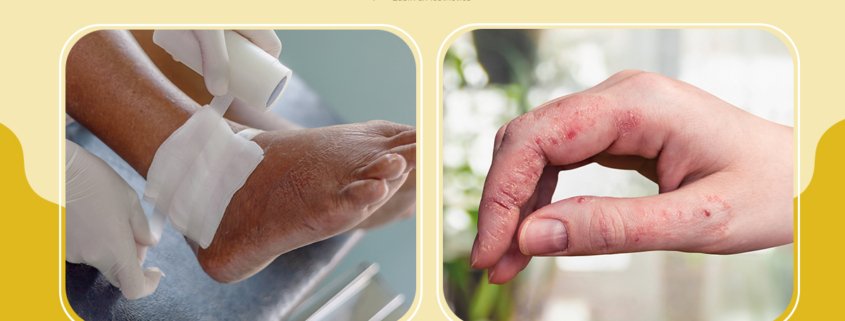Common Causes Of Chronic Wounds
Have you ever had wounds that stay for a prolonged period?
If you have a sore or wound that lingers over a period of weeks or months, it’s time to see a doctor. A chronic wound can lead to dangerous complications.
Chronic wounds, by definition, are sores that don’t heal within about three months. They can start small, as a pimple or a scratch. They might scab over again and again, but they don’t get better.
If you have a sore or wound that follows this pattern, it’s a red flag that you should consult a physician to start a care plan.
Why isn’t my wound getting better?
While cancer can sometimes present as a chronic wound, chronic wounds typically fall into three main categories: diabetic ulcers, venous leg ulcers, and pressure ulcers.
1. Diabetic ulcers
People who have diabetes are at greater risk for chronic wounds. Several factors contribute to this, including:
Neuropathy: Loss of feeling in the feet makes it more likely that small cuts or trauma will go unnoticed, leaving wounds at risk for infection.
Poor blood flow: Insufficient blood flow to the legs makes it harder for wounds to heal.
Infection: Compromised ability to fight infection puts people with diabetes at greater risk for wounds that progressively worsen and may require amputation.
To control chronic wounds, people with diabetes should make sure they’re eating enough protein, hydrating properly, and maintaining control of their blood sugar levels. It is also important to wear shoes that don’t create sores and keep toenails cut short.
2. Venous leg ulcers
Venous leg ulcers account for a high percentage of leg wounds. Frequently, they stem from uncontrolled swelling in the legs and tend to weep because the legs are overfilled with fluid. They can also be painful and itchy. Blood doesn’t flow back up the legs well with these wounds, so the legs often feel heavy. The skin around the wound can harden and become discolored.
Venous leg ulcers tend to recur, and maintenance usually requires regular compression therapy such as compression stockings. Any leg swelling should be evaluated by a healthcare professional because many conditions cause swelling. Some, such as blood clots, require more extensive evaluation or treatment.
Treatment options for venous ulcers may include:
Compression garments: ACE bandages or compression stockings help prevent fluid from pooling in the legs and can stave off future leg ulcers.
Vascular intervention: A vascular surgeon can help identify what underlying cause is contributing to leg ulcers.
3. Pressure ulcers
These wounds occur when pressure is constantly exerted on body tissue over a period of time. The constant pressure compresses vessels that carry blood to keep the tissue alive, opening the door for injury.
People who are bed-ridden or wheelchair-bound are at the highest risk for pressure ulcers, including those with spinal cord injuries or with some form of dementia. Sores are most likely to develop on the tail bone, sacral bone, or heels.
The No. 1 treatment for pressure ulcers is simply removing the pressure. Turning or moving the body can prevent injury. Some patients may also require special mattresses or additional cushioning to protect bones. Untreated ulcers can develop into infections so severe that hospitalization and intravenous antibiotics are required.
Have troubles with your chronic wounds? Seek help. There are a number of treatment options to help avoid more serious problems when it comes to your skin. We’ll be pleased to take care of that.
Schedule a consultation with our skin experts! Call our Patient Care Lines: (+632) 7-368 5238 l (+63) 917 862 7454 l (+63) 921 217 0517 for inquiries, questions, and appointments, or talk to our consultants via LiveChat here on our website.





Leave a Reply
Want to join the discussion?Feel free to contribute!